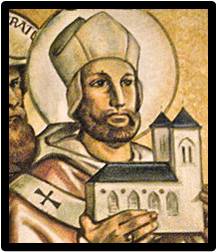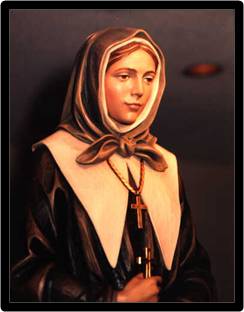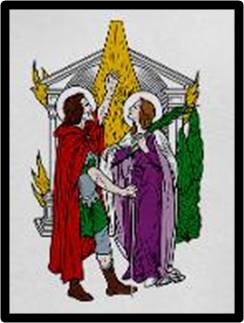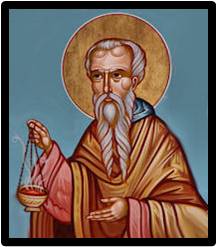
St. William was born at Nevers in France and came from a wealthy French family of the Counts of Nevers. His father Baldwin wanted William to be a part of the French military. William was educated by his uncle Peter the Hermit who was archdeacon of Soissons.
Even as a boy, he did not waste time fooling around or being idle. He spent time praying every day. When he joined the Cistercian order, he tried to be a good monk. His fellow monks admired him, even though he was not trying to impress anybody.
St. William had a great devotion to Jesus in the Blessed Sacrament. He practiced penance without showing how hard it was. He always seemed to be happy. When he was made abbot of the community, he remained humble.
When the archbishop of Bourges died, William was chosen to take his place. He was grateful to be consecrated a bishop, but unhappy because of all the attention he would receive. He stayed humble by doing penances for his own soul and for the conversion of sinners.
Although William loved to be alone with God in the Blessed Sacrament, he knew it was his duty as archbishop to travel all over his diocese willingly. He celebrated the Eucharist and preached the faith. He visited prisoners, the poor and sick, cared for them, consoled them and helped bring them to Jesus.
Archbishop William died on January 10, 1209. He was buried in the cathedral of Bourges and many miracles were reported by people who prayed at his tomb.

Marguerite was born in Troyes, France, and was the sixth of twelve children. Her parents were devout people and lived holy lives. When Marguerite was nineteen, her mother died. Marguerite took care of her younger brothers and sisters. Then her father died when she was twenty-seven.
The family was now raised and Marguerite prayed to know what to do with her life. The governor of Montreal, Canada, was visiting France. He tried to find teachers for the New World and he invited Marguerite to come to Montreal to teach school and religion classes. She said yes.
Marguerite gave away her all her money and belongings to other members of the family. They couldn’t believe that she would really leave their civilized country to go to a wild new country across the ocean. But she did.
She sailed on June 20, 1653, and arrived in Canada in mid-November. Marguerite began the construction of a chapel in honor Our Lady of Good Help in 1657. Then in 1658, she opened her first school.
Marguerite needed the help of more teachers. She returned to France in 1659 and returned with four companions. In 1670, she went to France again and brought back six companions. These brave women became the first sisters of the Congregation of Notre Dame.
St. Marguerite and her sisters helped people in the colony survive when food was scarce. They opened a vocational school and taught young people how to run a home and farm.
St. Marguerite’s congregation was growing. By 1681 there were eighteen sisters. Seven were Canadian. They opened more missions and two sisters taught at the Indian mission. St. Marguerite herself received the first two Indian women into the congregation.
When Mother Marguerite was seventy three years old, she handed over her congregation to the new superior Marie Barbier, who the first Canadian to join the order. St. Marguerite’s religious rule was approved by the Church in 1698.
Marguerite spent her last few years praying and writing an autobiography. On December 31, 1699, a young sister lay dying. Mother Marguerite asked the Lord to take her life in exchange.
By the morning of January 1, 1700, the sister was completely well and Mother Marguerite had a very high fever. She suffered for twelve days and died on January 12, 1700.




